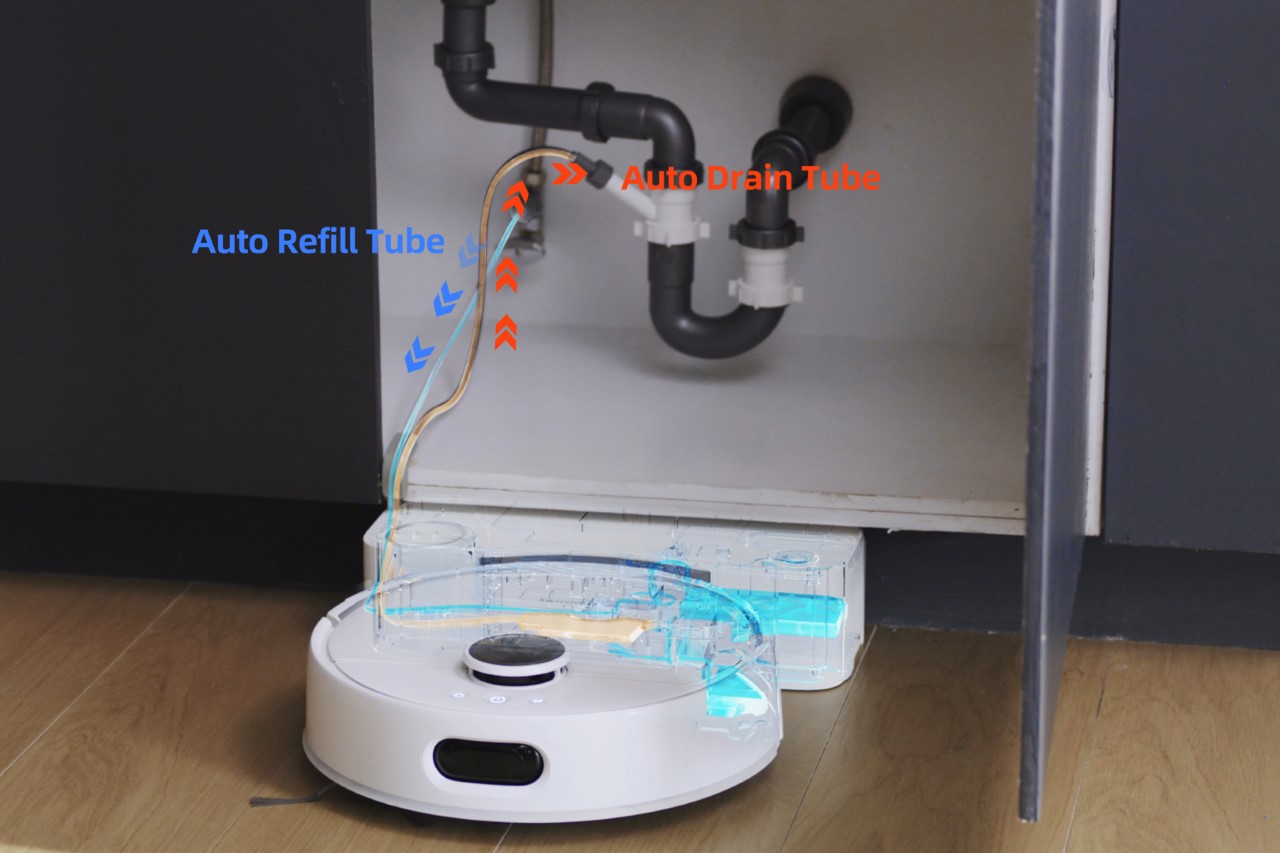How to Install Water Pipe for Robot Cleaner? Views: 8 Author: Site Editor Publish Time: 2025-06-17 Origin: Site
The Complete Guide to Installing Water Pipes for Robot Cleaners Robot cleaners
water connections. As a factory owner supplying robotic cleaners to 17 countries, I'll share professional installation techniques we recommend
to wholesalers and private-label partners.
Essential Tools and Materials for Professional-Grade Installation Tools Checklist:
Digital pressure gauge (0-100 PSI range)
Ratcheting PEX cutter (for clean 90° cuts)
Infrared thermometer (monitor pipe temperature)
Deburring tool (removes inner/outer pipe imperfections)
Torque wrench (for precise connector tightening)
Advanced Materials Table:
Material Purpose Recommended Specs PEX-AL-PEX Pipe
Main water line
1/2" diameter, oxygen barrier
Brass Compression Fittings
Connection points
Lead-free, WRAS approved
EPDM Rubber Seals
Leak prevention
5mm thickness, -40°C to 150°C range
Stainless Steel Clamps
Vibration resistance
304 grade, 12-20mm range
Pro Tip: For commercial installations, add a water hammer arrestor to protect the cleaner's pump from pressure surges.
Step-by-Step Professional Installation Process 1. Pre-Installation Planning Water Quality Test: Check for TDS < 50ppm and pH 6.5-8.0
Pressure Verification: Ensure 40-60 PSI static pressure
Route Mapping: Maintain ≤2 right-angle bends for optimal flow
2. Precision Pipe Preparation Measure with laser distance meter (add 10% for thermal expansion)
Cut using rotary pipe cutter (prevents oval deformation)
Deburr internal/external edges (reduces turbulence by 40%)
3. Military-Grade Connection System Apply thread sealant (Loctite 577 recommended)
Use two-clamp method at each joint
Torque fittings to 25-30 N∙m (use click-type wrench)
Case Study: A Canadian client reduced leaks by 92% after switching to this connection method.
Advanced Testing Protocol Three-Phase Quality Assurance:
Initial Pressure Test:
1.5x operating pressure for 30 minutes
Check for ≥0.5 PSI drop (indicates leaks)
Thermal Cycling:
Alternate between 5°C and 50°C water
5 complete cycles
Flow Verification:
Measure output at cleaner inlet (should be 1.8-2.2 GPM)
Check for laminar flow (no visible turbulence)
Maintenance Schedule for Commercial Installations Frequency Task Tools Needed Weekly
Visual inspection
Flashlight
Monthly
Seal lubrication
Food-grade silicone grease
Quarterly
Pipe descaling
Circulating pump, citric acid solution
Annually
Full pressure test
Digital gauge, log book
Note: In hard water areas (≥120 ppm), install a 5-micron pre-filter to prevent mineral buildup.
Troubleshooting Advanced Issues Problem: Intermittent water flow
Problem: Vibration noises
Problem: Early morning leaks
Conclusion: Professional Results Require Precision Proper water pipe installation extends your robot cleaner's lifespan by 3-5 years and maintains peak cleaning performance. For bulk buyers (50+ units), we provide:
Custom pipe kits with pre-measured lengths
Installation training videos
Technical support hotline













